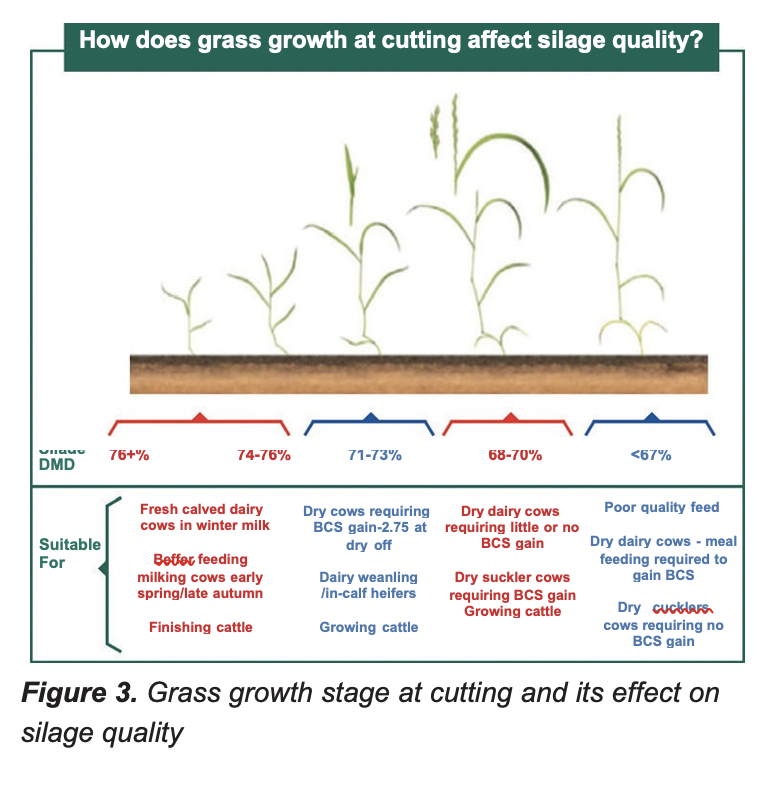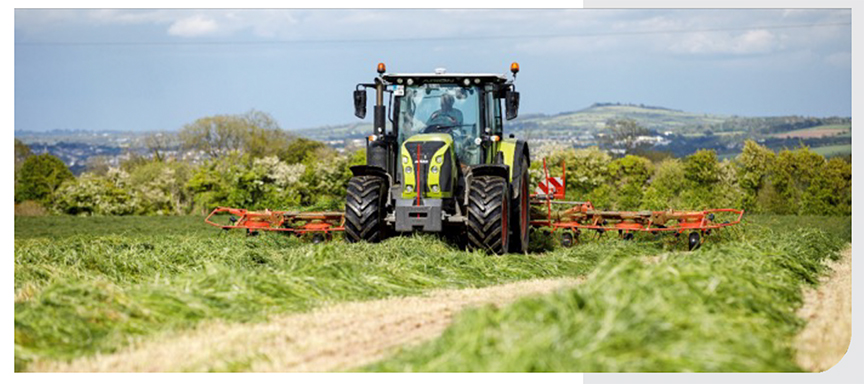Quality must not be compromised over quantity as first cut silages get underway. Regular monitoring of silage swards is just as important as monitoring a grazing sward. The digestibility or ‘DMD’ of silage is largely influenced by the growth stage at which the grass is cut and ensiled.
Cutting height will also influence sward regrowth. By raising the cutting height, grass plants are not forced to utilise energy reserves in order
to produce a new leaf, this also reduces the interval between silage cuts. Avoiding clamp contamination from the outset is crucial. Pastures that have been rutted should be rolled in order to minimise the introduction of soil to the clamp. Excessive soil within the clamp encourages clostridial development and increases the risk of a poor silage fermentation.
Where swards are allowed to go to seed before harvest, the digestibility of the silage will be compromised. Like most other plants, grass goes through a vegetative stage and then a reproductive stage, at which point lignin content increases. To ensure reproduction is a success, the grass begins to incorporate lignin into its tissue which helps keep the seed head upright. This lignin is indigestible to ruminants and can reduce the ‘DMD’ of grass silage significantly. Research has also shown that crude protein (CP, 160 vs 109g/kg DM), water soluble carbohydrates (WSC, 133 vs 107g/kg DM) and metabolisable energy (ME, 11.9 vs 10.5MJ/kg DM) content decline as the grass matures. This may prove very costly as nutritional losses will need to be buffered with concentrates.
Tedding out as soon as possible after mowing is recommended as dry matter levels are increased. This process also minimises the proliferation of undesirable bacteria and moulds within the swath.
It is crucial for lactic acid producing bacteria (LAB) to dominate within the clamp in order for a good fermentation to take place. These bacteria utilise the grasses natural soluble sugars and excrete lactic acid, reducing the pH of the clamp to 4.
 Cutting in the middle of the day when sugar levels peak is advisable. Inoculants may also be used to increase the amount of lactic acid producing bacteria within the clamp. Grassland will utilise 2.5 kg N/ha/day (equivalent to 2 units of N/acre/ day) under ideal growing conditions. Nitrogen acts as a buffer within the clamp and can have a negative impact during the fermentation process, so nitrogen supply is particularly critical. Too much will affect fermentation; too little and yields and crude protein content could be poor.
Cutting in the middle of the day when sugar levels peak is advisable. Inoculants may also be used to increase the amount of lactic acid producing bacteria within the clamp. Grassland will utilise 2.5 kg N/ha/day (equivalent to 2 units of N/acre/ day) under ideal growing conditions. Nitrogen acts as a buffer within the clamp and can have a negative impact during the fermentation process, so nitrogen supply is particularly critical. Too much will affect fermentation; too little and yields and crude protein content could be poor.
Correct management is key to ensuring a quality silage. It is important that producers focus on the quality of the end product and not just on getting value for money from the contractor by producing a bulky, stemmy crop.



